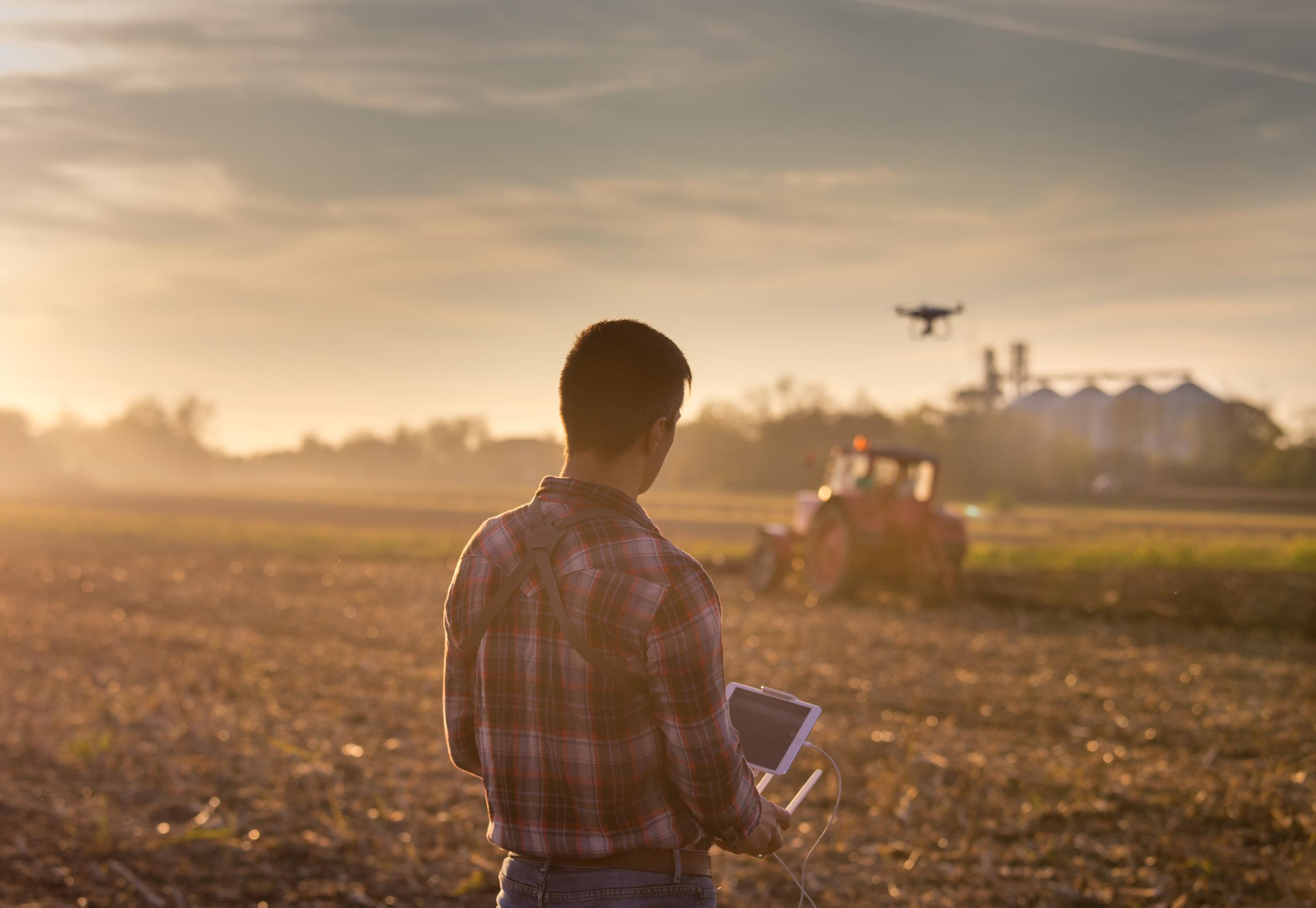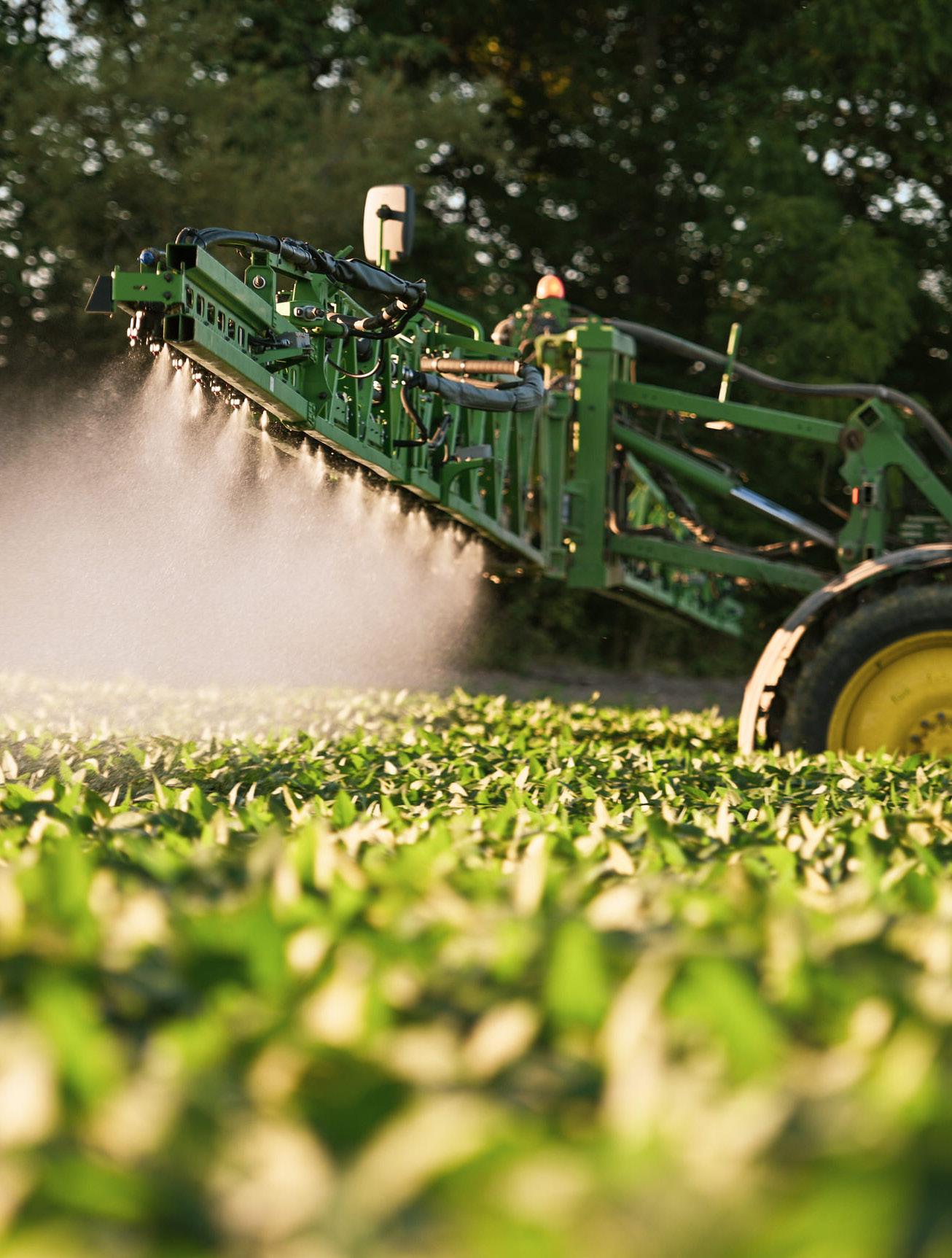
6 minute read
AI + Drones = The New Frontier
Joli A. Hohenstein
As farmers increasingly take to the skies for farm management, technology innovators, ag economists and agronomists find themselves in the unique position of assessing the potential as pilot, trainer, teacher and grower.
DJI Agriculture recently released its Agriculture Drone Insight Report 2022/23, reporting that at the end of 2022, the global number of DJI drones exceeded 200,000 units. Their cumulative operating area exceeded 200 million hectares (nearly 500 million acres), bringing the benefits of aerial technology to hundreds of millions of agricultural practitioners.
The World Economic Forum named agricultural drones one of the top three innovations that could be key to producing more crops with less effort and less impact on the environment.
In fact, the DJI report notes farmers are already seeing the results. For example, drone use helped a large-scale Washington potato grower reduce insect damage by 80 percent. Meanwhile, a Japanese rice producer used drones to increase yield to earn an additional $2,224 per acre.
More and more growers and retailers have been using drones for scouting fields, but they still must contend with the missing link between identifying what they’re seeing and then acting on it.
Artificial intelligence (AI), innovators say, is the next frontier.
By combining drones and AI, farmers can reduce guesswork across fields. “If we have a field with questions, instead of a hula-hoop test, we’re actually able to obtain per-acre stand count,” says Clint Chaffer, Asgrow Brand Manager whose family farms in northwest Illinois near Seaton. “It’s incredibly beneficial to determine if we need to replant.”
Clint uses technology from Sentera, which captures aerial imagery from fields and plots to help understand performance, letting farmers cover more acres with fewer resources. The company calls it an “ag analytics platform powered by machine learning.”
The data the drone acquires also pairs well with the information coming from his Climate FieldView digital platform, Clint says. “I look at field health and see what parts of the field I need to take a closer look at, then go fly a drone and see,” he explains. “We utilize it for another dataset that pairs well with the yield map to see if that change actually impacted yield.”
Leaf-Level Data
"Once farmers have the data, the next step is being able to act on it. That's another benefit AI is able to provide. It’s here in the form of leaf-level data that lets you immediately take steps in your fields," says Bryan McMurtrie, Regional Sales Manager for Taranis, which has created the largest library of leaf-level imagery.
Their technology uses satellite images and AI capabilities to generate a field health index, which identifies anomalies within the field. Then using their leaf-level insights, farmers can easily ground truth these anomalies and determine their next steps.
At a time when farmers are going to have to grow twice as many bushels to feed the world and stay profitable, AI technology is aimed at identifying and helping farmers address the things that take away from those yields.
“Multiple studies say that for every inch of weed, you’re going to see 4- to 5-bu. loss,” says McMurtrie. “It’s only going to cost about 1 bu. of beans or 2 bu. of corn to monitor your crop with Taranis and prevent that. There is no real capital expenditure for the customer.”
Taranis technology identifies the main stressors on crops: weeds, grasses, nutrient deficiencies, insects and chewing damage, and gives farmers actionable insights they can use to help unlock more yield potential.
Ag Research Advancements
Actionable information from AI isn’t just for farmers. Ag corporations are also leveraging AI to improve and advance research into new crop protection and seed technologies.
Asgrow’s parent company, Bayer, utilizes AI for genetics research.
The company’s Precision Breeding platform uses AI technology to more quickly and accurately pinpoint genetic changes needed and analyze data far faster than humans ever could. Mathematical puzzles that take humans 4 seconds to solve take an AI robot only 0.38 seconds. Likewise, the company says, AI can analyze millions of potential genetic combinations and make recommendations to solve breeding puzzles faster.
In fact, Bayer says AI is increasing the number of unique genetic combinations they can analyze each year by tenfold, and they’re able to do it without using more energy, land or water. The result, they say, is new seed varieties tailored to specific field conditions years ahead of schedule.
Likewise, Syngenta is collaborating with Insilico Medicine, an AI and deep learning company, to discover new, more effective crop protection solutions that safeguard the world’s food against diseases, weeds and pests, while also protecting ecosystems. The company says Insilico’s small molecule generative chemistry technology will help invent molecules for active ingredients faster and also actively design molecules that are more sustainable and environmentally friendly.
In addition, Syngenta says AI can help them be confident that new products protect biodiversity, including pollinators and beneficial insects, and help them design products that help keep soil healthy to capture carbon and reduce greenhouse gas emissions.

For both companies, AI delivers the power to analyze and leverage large datasets on a much shorter timeline than they could with traditional research processes. With the world population projected to grow at a rate of more than 1 percent annually and to increase to 9.8 billion by 2050, speed is of the essence. AI can help farmers add new tools to their arsenal, not only to do more with less, but to proactively utilize solutions that manage and address the many differences climate change is bringing to farms.
It's a new day in data, says McMurtrie. “In the past, data went into the tractor, came out of the combine. There was never anything in between. This technology gives season-long data capture.”
As Forbes magazine says, “Each season of data builds the knowledge-base to allow even more sophisticated use of the technology in the future.”
McMurtrie likes to call it a “game tape – you can review it and see what changes you need to make next season.”







